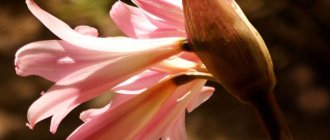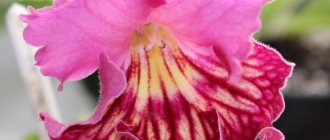The more magnificent and large-scale the flower, the brighter and more beautiful the flowerbed looks, especially if not just one representative, but the whole flowerbed is terry. Color, size and shape fade into the background when the “full” buds appear in front of you, which is what the terry plants are famous for. It is the internal density with an abundance of petals that can make a magnificent flower from an ordinary, not too attractive inflorescence, which significantly increases its significance and scope of use. We offer an original selection of plants with varieties that are so beautiful in their range of terry that they definitely deserve special attention.
Terry tulips
The classic version of tulips is a bud consisting of 5-6 petals, which initially have a closed shape, but when the day comes and the sun warms up, it opens successfully and closes at night. The advantage of double tulip varieties is the abundance of petals. Many people, looking at double tulips, think that this is a rose, although it is just a double tulip, but very beautiful. In addition to the abundance of petals, it should be noted that terryness can manifest itself more literally; on each petal along its entire perimeter there are small hairs that add splendor to the bud. They can be the same color as the petals, slightly shading the main tone of the flower, or white, to significantly emphasize the unusualness of the varieties. The popularity of just such tulips for cutting is enormous, because presenting a bouquet of double tulips is not only to please, but also to surprise.
Varieties of double tulips: Toronto Double, Brest, Drumline, Mascotte, Matchpoint, Queensland, Brooklyn, La Belle Epoque, Vogue, Uncle Tom, Mondial, Dreamtouch, Golden Nizza, Purple Tower, Rococo Double.
Home care
Caring for oriental lilies at home is quite simple. You just need to comply with certain requirements, and then the flowering will delight you with its splendor and brightness.
Temperature
In winter, it is advisable to keep the oriental lily at a temperature of +10 to +15 degrees. In summer, this indicator should be from +18 to +25 degrees. In the summer, it is advisable to expose flower pots to the air. If this is not possible, then you should open the windows more often, but so that the lily is not located in a direct draft.
Watering
The house oriental lily can die quite quickly if it is watered too much and too often.
This crop does not tolerate excess moisture. The roots begin to rot and turn black. For good plant development, the soil needs to be slightly moistened as it dries. Also, the planting container must have drainage holes.
To maintain the required level of humidity, you need to periodically spray the leaves with a spray bottle. This is especially true during the hot season. In winter, watering once a week will be enough.
Location and lighting
Oriental lilies grow well in sun or light shade. They can easily tolerate large amounts of sunlight throughout the day.
It is especially important that the plant receives sunlight in the morning and evening hours. Therefore, it is best to place the lily on southern windowsills.
Flowering and dormant period
To ensure proper care, you need to know how to care for a lily at different stages of life.
To ensure abundant flowering, you should regularly loosen the upper part of the substrate so that the root system does not experience oxygen starvation. Flowering plants are watered as the soil dries. The leaves are also additionally sprayed (about once a week).
If the plant has formed many heavy buds, then it should be tied to a support so that the stem does not break.
During the ripening of the buds, the penultimate feeding is carried out. During the flowering period, it is advisable to flavor the substrate with wood ash. This will make the flower more comfortable, which will make it more luxuriant.
After flowering and falling leaves, a dormant period begins. At this time, the lily is watered once a week with the addition of mineral and organic fertilizers. There is no need to spray the stem anymore, since during the dormant period all the nutrients are transferred to the bulb, and the formation of buds for reproduction begins.
When the stem is completely dry, stop watering. The dried parts are carefully cut off to give the flower a better rest. If the bulb remains in the pot under the soil, then fertilizing and ash should be regularly added to the soil. You will also need to water occasionally (once every 3-4 weeks). Store the plant in a cool place.
Pot and soil
Almost any type of container is suitable for growing lilies at home: a regular flower pot, a plastic box, a large ceramic flowerpot, etc. The size of the container should be chosen based on how many bulbs it will contain.
The pot must be deep and spacious enough to allow the plant to develop properly.
The higher the grade, the deeper and wider the container should be. It should also be taken into account that containers that are too light are not suitable for this crop. Such a pot may fall under the weight of the plant stem. If there is no other choice, then the bottom must be made heavier. To do this, you can use heavy drainage, for example, pebbles.
In order for a lily to bloom normally, it requires a large amount of nutrients. In addition, the substrate must be light. You can buy it in special stores or make it yourself. To prepare the substrate, mix turf soil and humus or compost in equal proportions. Mineral complex fertilizers are added to the resulting mixture.
Fertilizers and fertilizing
After the flowering period ends, the lily still needs care. Feeding will help the bulb make a larger supply of nutrients, making the plant stronger next season. Potassium-phosphorus fertilizers are used for fertilizing. They help protect the bulbs from fungus, diseases and pests.
Landing
Planting process:
- A drainage layer of pebbles, crushed stone, expanded clay or broken brick is placed in the pot.
- Fertile soil is poured. The layer should be approximately 10 cm.
- The bulbs are laid on it with their tops up, so that they do not touch each other.
- Lightly press the bulbs to the ground.
- Cover with a 20 cm layer of substrate.
- There should be 7-10 cm left to the edge of the pot, since as the plant grows it will be necessary to add soil - the bulbs will begin to form additional surface roots.
- Water with warm water. The substrate should get wet evenly throughout the entire volume.
Read more about how to plant a plant here.
How to propagate?
The oriental lily reproduces with the help of small bulbs that extend from the mother. They are called children. They are separated and transplanted into separate pots at the end of spring.
Planting children:
- A drainage layer is made in the pot and a layer of soil is filled.
- The bulb is placed there and sprinkled with a layer of substrate 5 cm thick.
- The plant is lightly watered.
All manipulations must be performed very carefully so as not to damage the small bulbs. Experts recommend planting several plants in one pot at once to ensure longer and more abundant flowering.
Diseases and pests
At home, lilies can be damaged by viral diseases and insect pests. Fungal infections appear when there is insufficient lighting or excessive watering.
If the plant is sick with gray rot, you need to carefully cut off the affected areas. After this, treatment is carried out from a spray bottle with a solution of copper sulfate.
Lily bulbs can be damaged by soft rot. The occurrence of this disease is indicated by brown wet spots on the surface. At the same time, the bulbs become moldy and soften. If they are partially damaged, you can treat them with crushed coal. After this, the bulbs are placed in a solution of the Rogor preparation for 1 hour and dried. In case of severe damage, the planting material is thrown away.
If a lily is affected by a mosaic, the flower cannot be restored.
If the temperature is too high, thrips and spider mites may attack the plant. In this case, the lily must be sprayed with insecticides.
Double daffodils
The popularity of double daffodils is so great that the classic varieties not only fade against their background, but also become practically unclaimed. The lush core, different shades and unique beauty of the tandem are an incredible sight. Yellow and white, orange and with a slight red – everything your heart desires. Shades can be rich and bright, or more delicate, pastel. Tandem or monotony are the individual characteristics of each variety.
Varieties of double daffodils: Sweet Pomponette, Calgary, Heamoor, Calgary, Acropolis, Delnashaugh, Full House, Obdam, Rip Van Winkle, Atholl Palace, Unique, Manly, Sweet Pomponette, Westward, Candy Princess, White Marvel, Cheerfulness.
Terry amaryllis or hippeastrum
It is this plant that can show that terry is present not only in the flower garden in the open ground, but also in apartments, on our window sills. This is a bulbous plant, which is often called the house lily, since the external data of the inflorescences are very similar. The inflorescence appears from an arrow, which the plant shoots out several times a year. There can be up to four inflorescences per flowering. Terry representatives of amaryllis are very beautiful, because in addition to the standard arrangement of petals like lilies, they are complemented by a beautiful and lush center of smaller petals. The final result looks not only beautiful and unusual, but also very rich.
Varieties of double amaryllis : Jewel, Marylin, Amadeus Candy, Aquaro, Bright Nymph, Striped Amadeus, White Nymph, Exotic Peacock, Lady Jane, Double Record.
Winter-hardy clematis varieties.
"Vanguard"
“Avant Garde” – variety height up to 3 m, flowers about 5 cm in diameter, pinkish-red with a terry light pink center, blooms very profusely in July – September.
“Beščady”
“Bieszczady” – a new variety up to 3 m tall, flowers about 17 cm in diameter, pink with a white-pink stripe in the center of each petal, blooms in July-August.
“Vistula”
“Vistula” is a new variety up to 3 m tall, light blue flowers up to 20 cm in diameter, blooms all summer, especially abundantly in August.
“Kaaru”
“Kaaru” – a variety up to 3 m tall, blooms profusely in June-August with purple flowers about 9 cm in diameter.
“Madame Julia Correvon”
“Madame Julia Correvon” (“Mme Julia Correvon”) - a variety up to 4 m tall, bright wine-red flowers with narrow petals with a diameter of about 8 cm, blooms very profusely from mid-June to October, can be used as a ground cover plant.
“Mazowsze”
“Mazowsze” – plant height up to 3.5 m tall, blooms in July – August with large burgundy flowers up to 20 cm in diameter.
“Mazuri”
“Mazury” – plant height up to 3 m, blue and light blue double flowers with a diameter of about 16 cm, at the end of flowering they show the middle, blooms in July – August.
"Sally"
“Sally” is a new variety up to 1.5 m high, the flowers are soft pink with a darker stripe in the center of each petal, it blooms very profusely all summer until October.
"Star River"
“Star River” – variety height up to 1.5 m, star-shaped blue flowers with a darker stripe in the center of each petal, about 6 cm in diameter, blooms very profusely all summer, suitable for planting in containers and as ground cover or ampelous plant.
“Foreve Friends”
“Forever Friends” is a new variety of 2009, plant height up to 3 m, white flowers with purple stamens about 10 cm in diameter, blooms in July – September.
“Exiting”
“Exciting” is a new variety up to 1.5 m tall, lilac flowers with a lush yellow center about 5 cm in diameter.
"Eriostemon"
“Eriostemon” – a variety up to 2 m tall, blooms very profusely with lilac-blue drooping flowers with four sepals about 8 cm in diameter in July-September.
Location:
Clematis prefer a light or semi-shaded (for large-flowered varieties) location. They really don't like overheating of the soil. Therefore, when planting in a sunny place, it is recommended to shade the soil in the zone of clematis roots with annuals or perennials, using a root delimiter 30–40 cm deep.
Popular articles Description, planting and care of rock alyssumThe soil should be fertile sandy loam or loamy moist, but not waterlogged. Areas with groundwater closer than 1.5 m are not suitable for planting clematis.
Care:
In the spring, it is necessary to trim the clematis stems almost to ground level, leaving the first pair of strong buds and feed them with complete mineral fertilizer.
In the summer, in June, a second feeding is given with mineral or organic fertilizer. The growing stems are guided along a support or tied up.
During dry weather, be sure to water once every five days, 1-2 buckets of water per bush.
If desired, clematis is also fed with mineral fertilizer in July.
In autumn, the ground around the clematis must be mulched with humus in a layer of 5–7 cm, the stems removed from the supports and laid on mulch.
With this method of preparing clematis for winter, the clematis varieties indicated in the article are winter-hardy without additional shelter.
Terry hyacinth
It is unlikely that we have seen such a beautiful, lush and voluminous hyacinth, since terry not only transforms, but also significantly modifies the plant. The structure of the plant itself and the formation of inflorescences consists of a candle shape, where a huge number of small inflorescences of the same color make up a magnificent, beautiful picture. What about the doubleness of each small inflorescence in a flower - the beauty is indescribable. The splendor of the thick hyacinth increases significantly, presenting an incredibly beautiful sight - very beautiful.
Terry hyacinth varieties: Spring Beauty, Snow Crystal, Holly Hock, Prince of Love, Red Diamond, Rosette, Manhattan, Royal Navy, Blue Tango.
Sowing cosmos for seedlings
Growing a plant using seedlings is used in two cases - a climate zone with a cold climate, where the process of growing terry cosmos from seeds becomes quite difficult, as well as the gardener’s desire to create a geometrically correct orientation for the growth of flowers.
To achieve the desired result, you must:
- At the beginning of April, place a couple of seeds in a small pot with previously prepared soil.
- Periodically moisten the soil with a spray bottle.
- Cover the pot with a thin layer of cling film and take it to a well-lit place.
- Monitor the air temperature in the room - not lower than +19 °C.
- After 1-2 weeks, the first shoots appear, after which you need to remove the film.
- Water the soil with small portions of water from time to time.
- As soon as the seedlings reach 9-10 cm, carefully transplant each one into a separate container.
Terry peony
Peony is considered one of the most recognizable and familiar double plants, since it is its lush center that is the norm to which everyone is accustomed and proudly admires. A wide palette of shades, full, with a huge number of petals inside, which form a voluminous ball, as well as bent petals back.
Varieties of double peonies : Amabilis, Mothers Choice, Kansas, Many Happy Returns, Red Charm, Edulis Superba, Buckeye Belle, Victoire de la Marne, Angel Chooks, Black Beauty, Rubra Plena, Command Performance.
Terry lilies
Lilies are rightfully considered one of the most beautiful and majestic plants on the site, and double versions will be at the forefront of preferences. Bright colors, combination of shades and the fullness of each inflorescence - this is an incredibly beautiful unison. With the classic arrangement of six petals, the terry lily has an additional core in the form of more compact petals. The value of just such lilies is high, since they are rare to find, and if you fill the entire flower garden with terry lilies, the beauty will be indescribable.
Varieties of double lilies : Double Sensation, Apricot Fudge, Fata Morgana, Elodie, Ceb Latte, Mistery Dream, Sphinx, Kensington, Canary Warf.
The variety of double flowers is impressive, thereby provoking experimentation, growing real beauties for the site.











